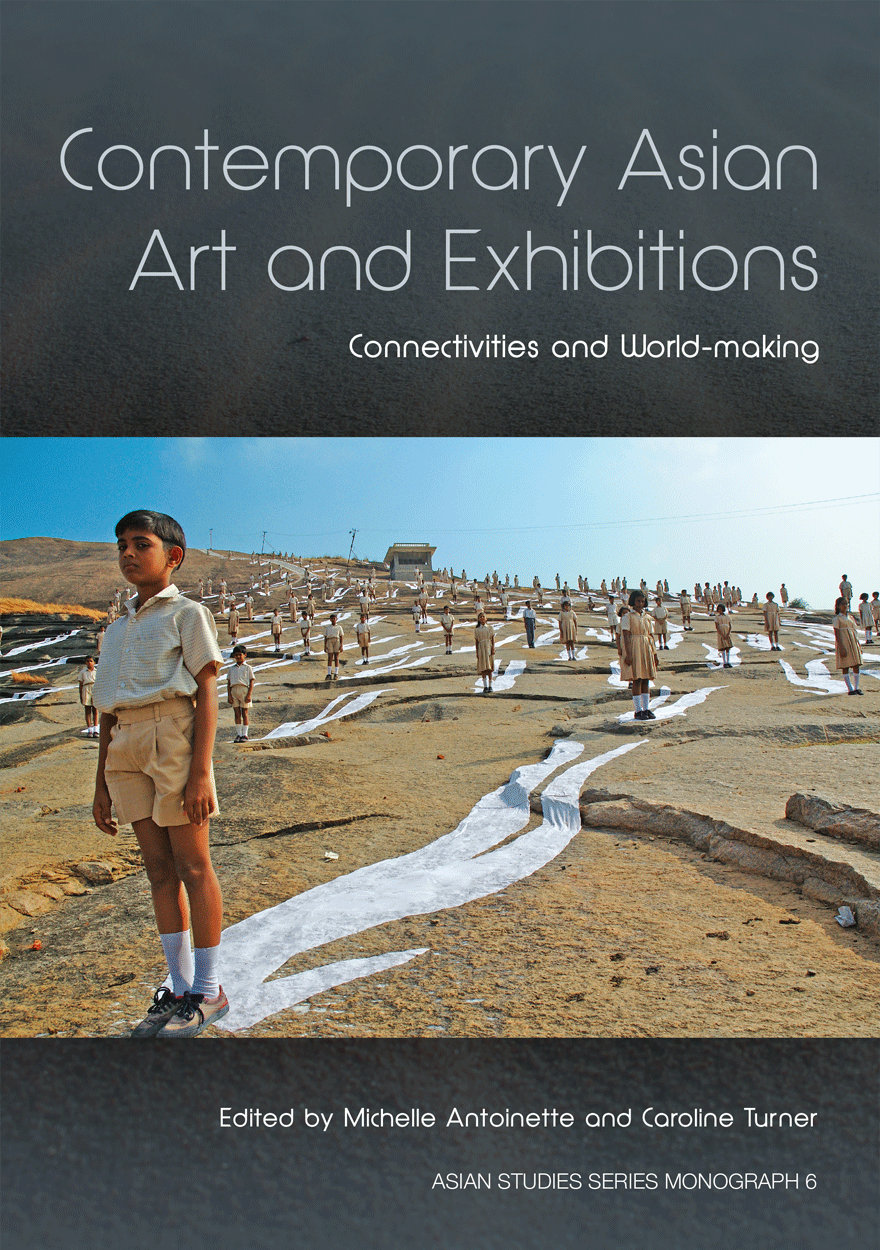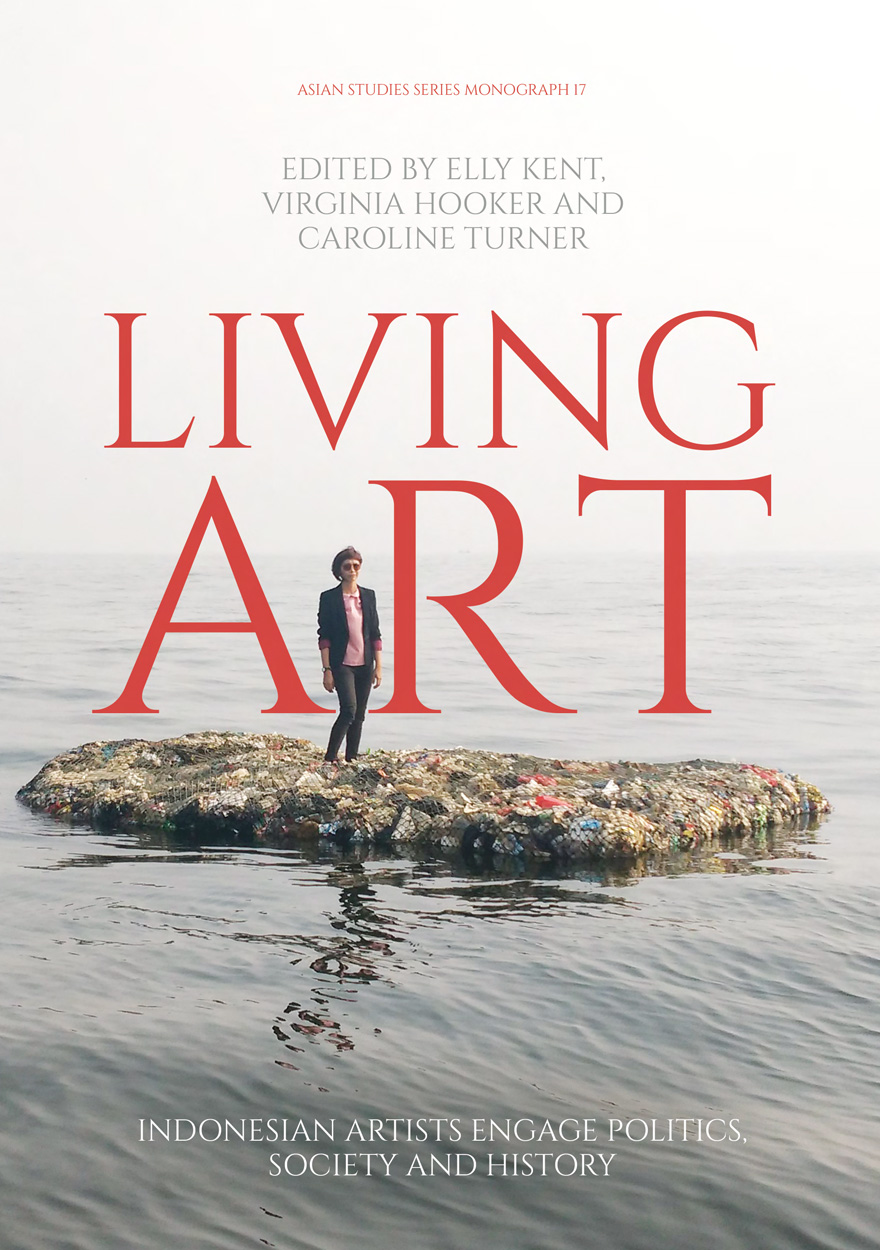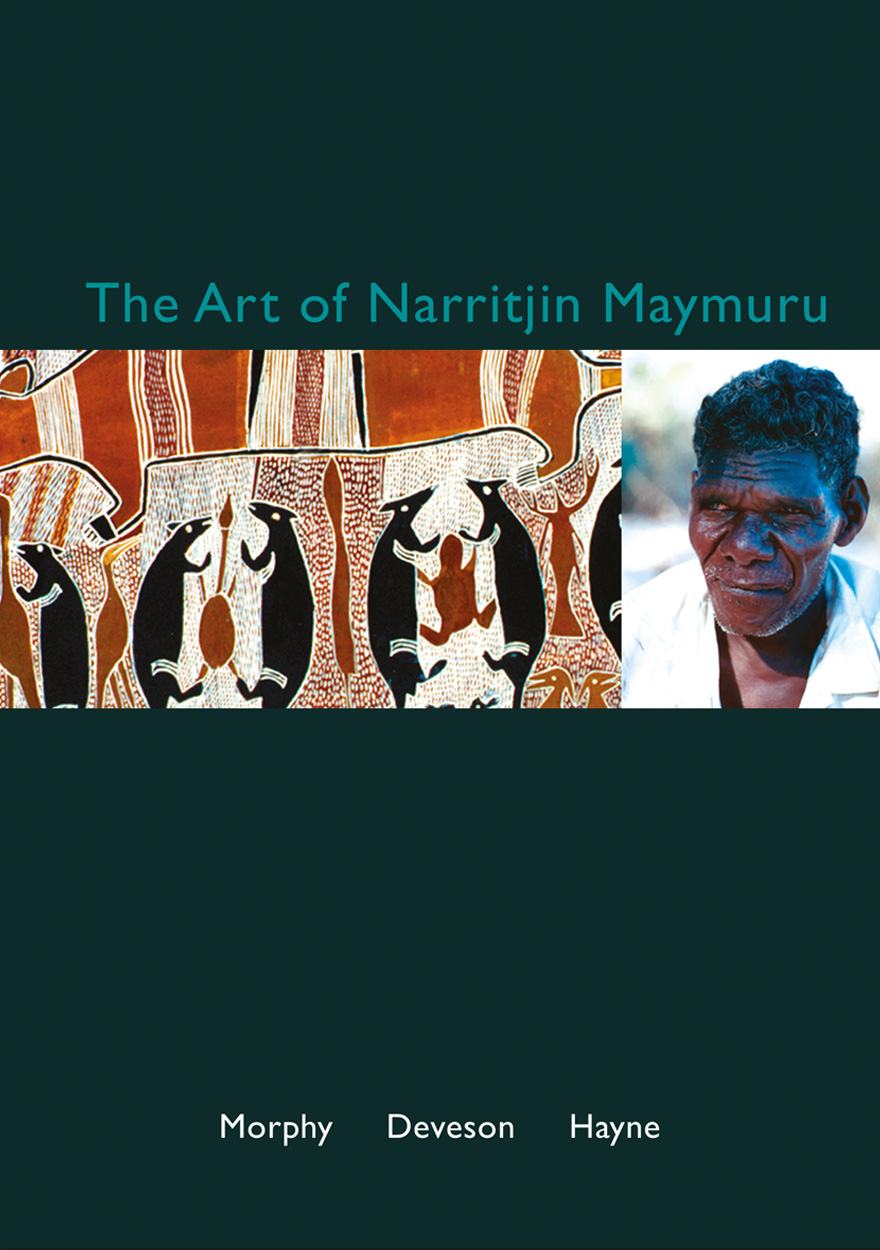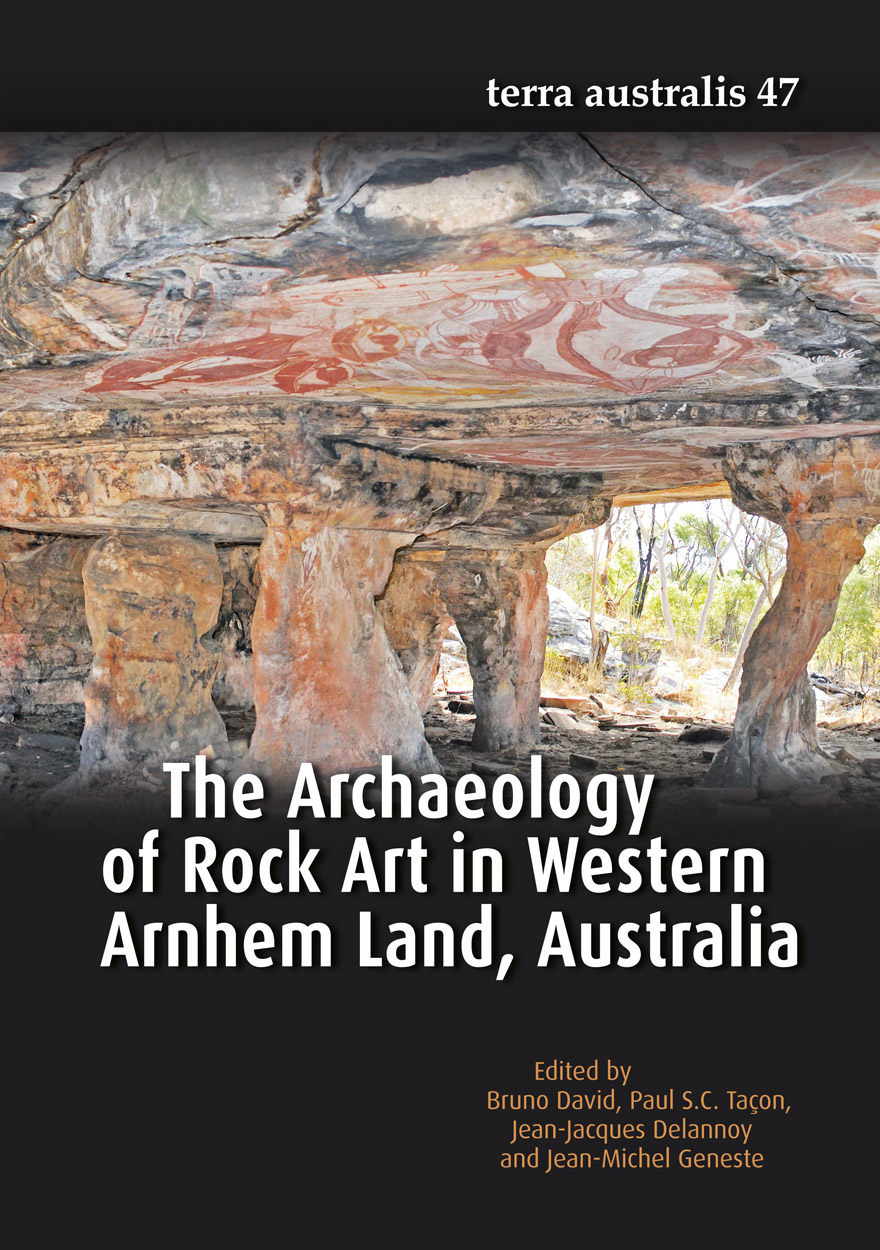Books
Browse or search ANU Press' range of books or find out more about the publications' authors and co-publishers. Download the book for free or buy a print-on-demand copy.
Displaying results 1 to 10 of 233.

Contemporary Asian Art and Exhibitions »
Connectivities and World-making
Edited by: Michelle Antoinette, Caroline Turner
Publication date: October 2014
“… a diverse and stimulating group of essays that together represents a significant contribution to thinking about the nascent field of contemporary Asian art studies … Contemporary Asian Art and Exhibitions: Connectivities and World-making … brings together essays by significant academics, curators and artist working in Australia, Asia and the United Kingdom that reflect on contemporary art in the Asia-Pacific region, and Australia’s cultural interconnections with Asia. It will be a welcome addition to the body of literature related to these emergent areas of art historical study. ”
— Dr Claire Roberts, Senior Lecturer in Art History, University of Adelaide
This volume draws together essays by leading art experts observing the dramatic developments in Asian art and exhibitions in the last two decades. The authors explore new regional and global connections and new ways of understanding contemporary Asian art in the twenty-first century.
The essays coalesce around four key themes: world-making; intra-Asian regional connections; art’s affective capacity in cross-cultural engagement; and Australia’s cultural connections with Asia. In exploring these themes, the essays adopt a diversity of approaches and encompass art history, art theory, visual culture and museum studies, as well as curatorial and artistic practice.
With introductory and concluding essays by editors Michelle Antoinette and Caroline Turner this volume features contributions from key writers on the region and on contemporary art: Patrick D Flores, John Clark, Chaitanya Sambrani, Pat Hoffie, Charles Merewether, Marsha Meskimmon, Francis Maravillas, Oscar Ho, Alison Carroll and Jacqueline Lo.
Richly illustrated with artworks by leading contemporary Asian artists, Contemporary Asian Art and Exhibitions: Connectivities and World-making will be essential reading for those interested in recent developments in contemporary Asian art, including students and scholars of art history, Asian studies, museum studies, visual and cultural studies.

Living Art »
Indonesian Artists Engage Politics, Society and History
Publication date: November 2022
Living Art: Indonesian Artists Engage Politics, Society and History is inspired by the conviction of so many of Indonesia’s Independence-era artists that there is continuing interaction between art and everyday life. In the 1970s, Sanento Yuliman, Indonesia’s foremost art historian of the late twentieth century, further developed that concept, stating: ‘New Indonesian Art cannot wholly be understood without locating it in the context of the larger framework of Indonesian society and culture’ and the ‘whole force of history’. The essays in this book accept Yuliman’s challenge to analyse the intellectual, sociopolitical and historical landscape that Indonesia’s artists inhabited from the 1930s into the first decades of the new millennium, including their responses to the COVID-19 pandemic.
The inclusion of one of Yuliman’s most influential essays, translated into English for the first time, offers those outside Indonesia an insight into a formative period in the generation of new art knowledge in Indonesia. The volume also features essays by T. K. Sabapathy, Jim Supangkat, Alia Swastika, Wulan Dirgantoro and FX Harsono, as well as the three editors (Elly Kent, Virginia Hooker and Caroline Turner). The book’s contributors present recent research on issues rarely addressed in English-language texts on Indonesian art, including the inspirations and achievements of women artists despite social and political barriers; Islam- inspired art; artistic ideologies; the intergenerational effects of trauma; and the impacts of geopolitical change and global art worlds that emerged in the 1990s. The Epilogue introduces speculations from contemporary practitioners on what the future might hold for artists in Indonesia.
Extensively illustrated, Living Art contributes to the acknowledgement and analysis of the diversity of Indonesia’s contemporary art and offers new insights into Indonesian art history, as well as the contemporary art histories of Southeast Asia and Asia more generally.

How Local Art Made Australia’s National Capital »
Authored by: Anni Doyle Wawrzyńczak
Publication date: August 2020
Canberra’s dual status as national capital and local city dramatically affected the rise of a unique contemporary arts scene. This complex story, informed by rich archival material and interviews, details the triumph of local arts practice and community over the insistent cultural nation-building of Australia’s capital. It exposes local arts as a vital force in Canberra’s development and uncovers the influence of women in the growth of its visual arts culture. A broad illumination of the city-wide development of arts and culture from the 1920s to 2001 is combined with the story of Bitumen River Gallery and its successor Canberra Contemporary Art Space from 1978 to 2001. This history traces the growth of the arts from a community-led endeavour, through a period of responses to social and cultural needs, and ultimately to a humanising local practice that transcended national and international boundaries.

The Australian National University School of Art: A history of the first 65 years »
Authored by: Michael Agostino
Publication date: October 2010
The ANU School of Art has built an international reputation as a leader in visual arts, attracting staff and students from around Australia and the world. it has an active exhibition program; regular visits from distinguished national and international artists; overseas student exchange; open art access classes and co-operative arrangements with many other areas of ANU research and teaching. This volume presents the history of the ANU School of Art, from its humble beginnings as part of the Canberra Technical College in Kingston, to its evolution to stand on the world stage as part of one of Australia's top ranked universities playing an important role in the teaching of research of Australian visual arts, crafts and design.
Hard copies of this book are available through the ANU School of Art.
Download for free
Not available for purchase

Hesychasm and Art »
The Appearance of New Iconographic Trends in Byzantine and Slavic Lands in the 14th and 15th Centuries
Authored by: Dr Anita Strezova
Publication date: September 2014
“Although many of the iconographic traditions in Byzantine art formed in the early centuries of Christianity, they were not petrified within a time warp. Subtle changes and refinements in Byzantine theology did find reflection in changes to the iconographic and stylistic conventions of Byzantine art.
This is a brilliant and innovative book in which Dr Anita Strezova argues that a religious movement called Hesychasm, especially as espoused by the great Athonite monk St Gregory Palamas, had a profound impact on the iconography and style of Byzantine art, including that of the Slav diaspora, of the late Byzantine period. While many have been attracted to speculate on such a connection, none until now has embarked on proving such a nexus. The main stumbling blocks have included the need for a comprehensive knowledge of Byzantine theology; a training in art history, especially iconological, semiotic and formalist methodologies; extensive fieldwork in Macedonia, Bulgaria, Serbia, Greece, Turkey and Russia, and a working knowledge of Greek, Old Church Slavonic, Macedonian, Russian, Serbian, Latin as well as several modern European languages, French, German, Russian and Italian. These are some of the skills which Dr Strezova has brought to her topic.”
Professor Sasha Grishin AM, FAHA
Adjunct Professor of Art History
School of Literature, Languages and Linguistics
The Australian National University

The Art of Narritjin Maymuru »
Publication date: January 2005
Narritjin Maymuru led a life that was as extraordinary and adventurous as that of any Australian artist of the twentieth century. Howard Morphy, with the help of Pip Deveson, has scoured the collections of museums, art galleries and private collections around the world to bring together an archive of Narritjin’s paintings and carvings spanning nearly forty years of his work.
The Art of Narritjin Maymuru enables you to explore his art. You can begin either by following the timeline that summarises the main biographical features of Narritjin’s life or by moving straight into the sets of paintings.
The Art of Narritjin Maymuru is currently unavailable for purchase due to technical issues. We hope to offer an online version of this work in the near future.
CD currently unavailable. We apologise for any inconvenience.
Reviews of the publication
Francoise Dussart, American Anthropologist, June 2007, Vol. 109, No. 2, pp. 363-364
John E. Stanton, Australian and New Zealand Journal of Art, Volume 7, Number 2, 2006
Charlotte Townsend-Gault, Visual Anthropology Review, Fall 2006, Vol. 22, No. 2, pp. 80-82
Not available for purchase

The Archaeology of Rock Art in Western Arnhem Land, Australia »
Publication date: November 2017
Western Arnhem Land, in the Top End of Australia’s Northern Territory, has a rich archaeological landscape, ethnographic record and body of rock art that displays an astonishing array of imagery on shelter walls and ceilings. While the archaeology goes back to the earliest period of Aboriginal occupation of the continent, the rock art represents some of the richest, most diverse and visually most impressive regional assemblages anywhere in the world. To better understand this multi-dimensional cultural record, The Archaeology of Rock Art in Western Arnhem Land, Australia focuses on the nature and antiquity of the region’s rock art as revealed by archaeological surveys and excavations, and the application of novel analytical methods. This volume also presents new findings by which to rethink how Aboriginal peoples have socially engaged in and with places across western Arnhem Land, from the north to the south, from the plains to the spectacular rocky landscapes of the plateau. The dynamic nature of Arnhem Land rock art is explored and articulated in innovative ways that shed new light on the region’s deep time Aboriginal history.

Pedigree and Panache »
A History of the Art Auction in Australia
Authored by: Shireen Huda
Publication date: April 2008
Art auctions have long captured the public imagination. They regularly make news headlines and have become synonymous with glamour, money and social distinction. The marketing of auction houses and the works they sell has resulted in firms attaining authoritative positions and the ability both to influence and reflect collecting tastes. Pedigree and Panache is the first comprehensive history of the art auction in Australia. In this fascinating work, Shireen Huda investigates the construction of the glamorous reputation of art auctions and art auction houses. Featuring absorbing case studies of key art auctions and major art auction houses in Australia (including Christie’s, Sotheby’s and Deutscher-Menzies) the work provides an overview of the origin and international development of art auctions. The development of the Australian marketplace is then explored, detailing colonial inception and continuing until Christie’s withdrawal of its saleroom presence in 2006.
This book is an engaging read for those involved in the art industry, as well as historians, artists, collectors and anyone interested in the art market, art investment, social history and art history.

Dreamtime Superhighway »
Sydney Basin Rock Art and Prehistoric Information Exchange
Authored by: Jo McDonald
Publication date: August 2008
Dreamtime Superhighway presents a thorough and original contextualization of the rock art and archaeology of the Sydney Basin. By combining excavation results with rock art analysis it demonstrates that a true archaeology of rock art can provide insights into rock art image-making in people’s social and cultural lives. Based on a PhD dissertation, this monograph is a significantly revised and updated study which draws forcefully on rich and new data from extensive recent research—much of it by McDonald herself. McDonald has developed a model that suggests that visual culture—such as rock artmaking and its images and forms—could be understood as a system of communication, as a way of signaling group identifying behaviour. For the archaeologist of art, the anthropologist of art and those of us who try to think about past worlds… this monograph is a must read.
Margaret W. Conkey
University of California, Berkeley

Creative Frictions »
Arts Leadership, Policy and Practice in Multicultural Australia
Authored by: Cecelia Cmielewski
Publication date: August 2021
Creative Frictions explores the relationship between visionary aspects of practice and policy. Despite over 30 years of arts and cultural policy attention, there remains a widespread view among the general public and artists alike that creative production does not reflect Australia’s culturally diverse population. Australia’s increasingly complex society can no longer be confined to ‘essentialised’ or traditional definitions of ethnic communities. While this diversity and its emerging complexity can be ‘celebrated’ as a source of creativity and innovation, it can also give rise to social, political and creative challenges. A key challenge that remains for the arts sector is its ability to support the creative expression of cultural difference. One measure of inclusive creative production is to look at the participation of artists of non–English speaking backgrounds (NESBs)—a problematic term discussed in the book. There are half as many NESB artists compared to those of other professions participating in the workforce, and while under-representation is an issue for management in the arts sector, the question of representation also benefits from being understood more broadly beyond the narrow sense of multiculturalism as a tool to manage cultural difference. This book explores the crucial role of creative leaders and how they work with the ‘mainstream’ while maintaining their creative integrity and independence to generate a ‘virtuous’ circle of change. Creative Frictions argues that it is the NESB artists who lead change in the arts sector and that creative and organisational leadership working in partnership make creative use of ‘friction’ and develop the necessary ‘trust’ to generate the ‘traction’ for a supportive multicultural arts milieu.



